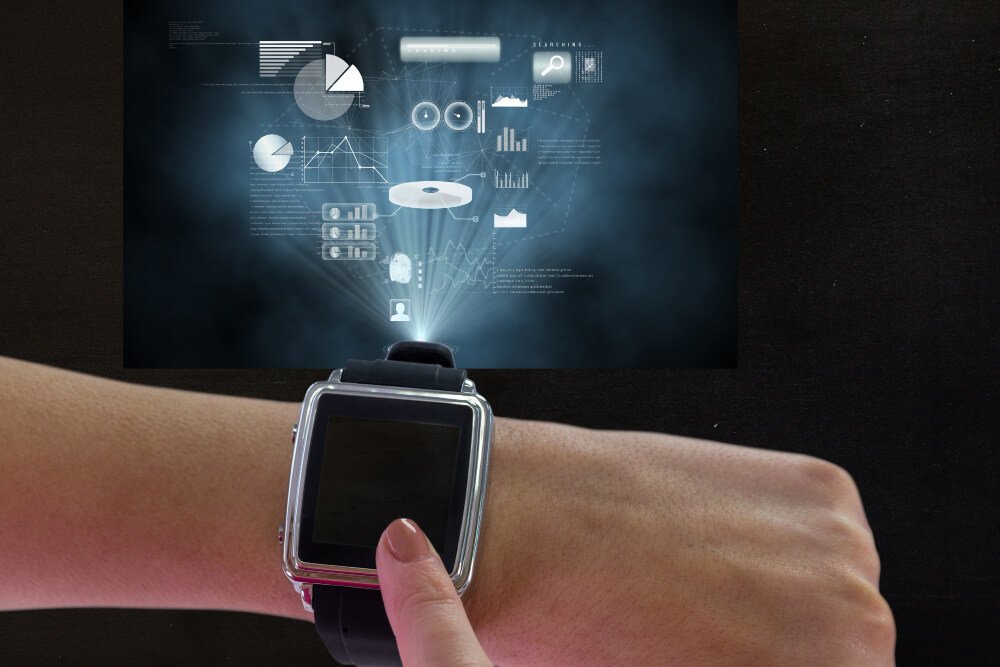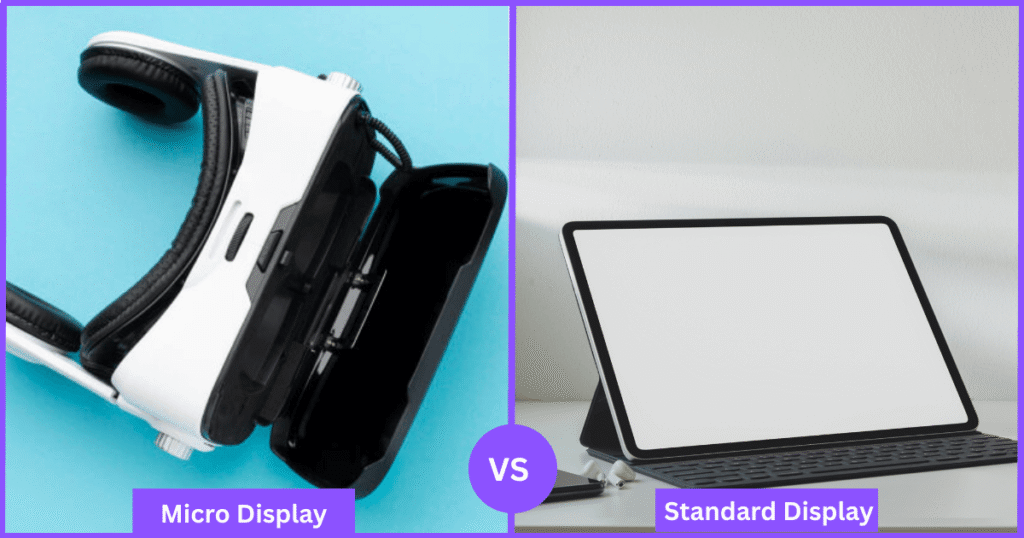Micro displays are compact screens used in modern devices like AR and VR headsets, wearable technology, cameras, and projectors. Unlike standard displays such as LCD, OLED, or micro OLED, micro displays are designed to fit into small form factors without compromising on performance.
Understanding the differences between micro displays and standard displays is essential for device manufacturers, engineers, and tech enthusiasts.
In this article, we will explore key differences, advantages, limitations, and future trends, helping you understand why micro displays are increasingly preferred for compact and immersive devices.
What is a Micro Display?

A micro display is a tiny display screen that delivers high-resolution visuals in a small form factor. These displays use technologies like LCOS (Liquid Crystal on Silicon), DLP (Digital Light Processing), and OLED micro panels.
Micro displays are highly energy-efficient, lightweight, and perfect for wearable devices, AR/VR headsets, and compact cameras. Their small size allows for high pixel density, providing sharp and clear images even in devices where space is limited.
What Are Standard Displays?

Standard displays include LCDs, OLEDs, and micro OLED panels. They are typically used in televisions, monitors, laptops, and tablets. Standard displays are larger, have lower pixel density in small devices, and usually consume more power compared to micro displays.
While standard displays are ideal for large screens, they are less suitable for compact devices that require high-resolution visuals in a small package.
Key Differences Between Micro Display and Standard Displays
- Size and Form Factor
- Micro displays are tiny and compact, suitable for AR glasses, wearable devices, and cameras.
- Standard displays are larger and usually not suitable for lightweight portable devices.
- Resolution and Pixel Density
- Micro displays offer higher pixel density in small sizes, producing sharp, crisp images.
- Standard displays may struggle to maintain clarity at a small scale.
- Power Consumption
- Micro displays are energy-efficient, helping extend battery life in wearable and portable devices.
- Standard displays generally consume more power, especially large OLED or LCD panels.
- Refresh Rate and Response Time
- Micro displays are ideal for fast-moving visuals in AR/VR, providing smooth motion and low latency.
- Standard displays may have slower response times when scaled down.
- Applications
- Micro Displays: AR/VR headsets, wearable devices, electronic viewfinders, pico projectors, medical devices, automotive HUDs.
- Standard Displays: TVs, monitors, laptops, smartphones (general use).
Advantages of Micro Displays Over Standard Displays
- Compact and Lightweight: Perfect for wearable devices and AR glasses.
- High Visual Clarity: Offers sharp images and high pixel density.
- Energy Efficient: Reduces power consumption, ideal for battery-powered devices.
- Immersive Experience: Suitable for VR headsets and other immersive applications.
Limitations of Micro Displays Compared to Standard Displays
- Higher Production Costs: Micro displays are more expensive to manufacture.
- Limited Availability: Not all devices currently use micro displays.
- Technical Challenges: Long usage can sometimes lead to screen burn-in or heat generation.
Future Trends in Micro Display Technology
Micro displays are expected to become increasingly common in AR/VR, wearable devices, cameras, and automotive HUDs.
- Advancements in Resolution and Color Accuracy: Future micro displays will offer even sharper and more vibrant visuals.
- Integration with AI and Sensors: Devices may include smart AR features using micro displays.
- Wider Adoption in Professional Devices: Medical, industrial, and entertainment industries are likely to adopt micro displays for precision and compactness.
Conclusion
Micro displays and standard displays serve different purposes. Micro displays excel in compact, high-resolution, energy-efficient devices, while standard displays are better suited for large screens.
For AR/VR enthusiasts, wearable device users, and tech professionals, micro displays offer superior performance in small form factors. As technology advances, micro displays will continue to shape the future of immersive experiences, wearable devices, and compact electronics.
To explore more about the types, features, and uses of micro displays.

